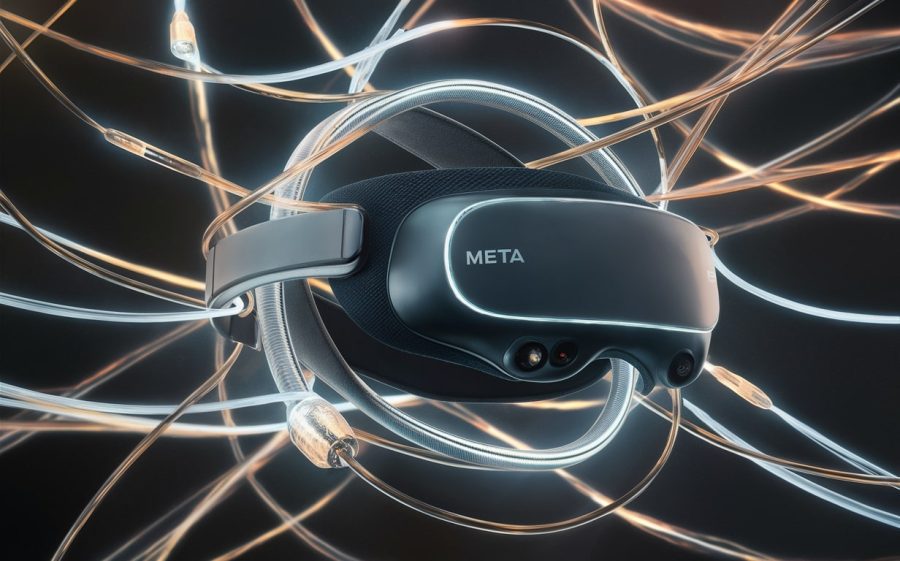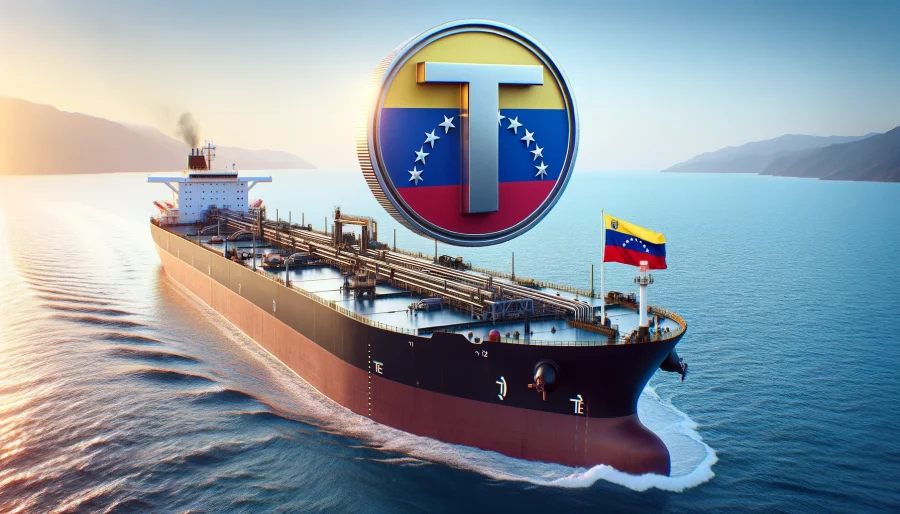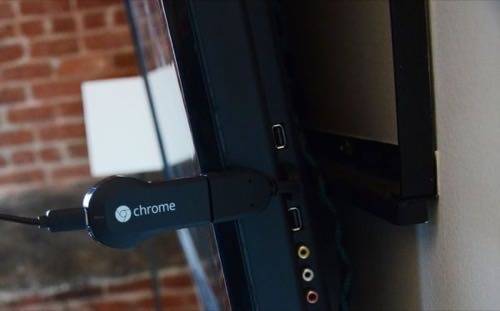
Google’s push for the living room got a fuel injection yesterday when the company revealed its Chromecast streaming stick.
See also: 5 Ways Chromecast Grew Up This Year
The compact dongle can push Web video, music and pics from the cloud to your television. But the really big deal is that you can control it all from a range of devices for a dirt-cheap price—a $35 price tag that could tip the scale for fence-sitters.
Here’s what you most need to know about the little streaming stick that looks poised to make big waves.
See also: 5 Cool Chromecast Hacks And Workarounds
(1) Chromecast really is tiny: The stick is just three inches long, with a micro USB port on one end and a HDMI plug on the other. So it won’t take up precious space in an entertainment center.
(2) It has a power cord: That micro USB port is for power; you’ll need to run a USB cable from the Chromecast to the included power adapter or a USB port on your TV. So the unit isn’t a fully self-contained gadget that will hide neatly and completely behind a TV. It’s worth noting for anyone who plans to carry it around to friends’ houses, meetings or other places where connected TVs aren’t available.
(3) There’s no learning curve: Google repeatedly emphasized that there’s nothing new to learn and no configuration to fuss with in Chromecast. It’s fully controllable from iPhones, Android phones and laptops—in other words, a variety of gadgets that lots of people already own. Those can manage playback, pause, skip and even volume without any real setup or need to learn new sets of controls.
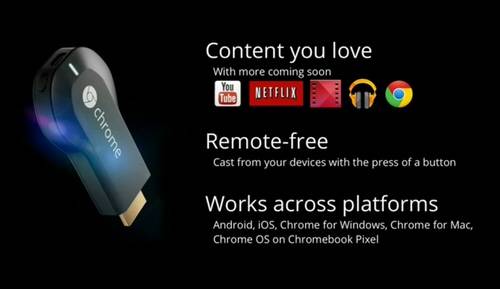
(4) Chromecast is largely platform agnostic: You can control Chromecast from Android phones or tablets (version 2.3 or above), iOS devices (6.0 or higher), and computers with Chrome for Mac (Mac OS 10.7+) or Chrome for Windows (Windows 7+), as well as the Chromebook Pixel. Support for other Chromebooks is in the works.
That agnosticism extends beyond simple control of the Chromecast. You can also resume watching, say, a Netflix movie on your mobile—whatever it is—from the precise moment where you left off on the TV, and vice versa.
(5) It’s cloud-only: Unlike Apple’s AirPlay, Chromecast does not involve flinging saved files from a phone, tablet or laptop to the television. Just tap a button inside a compatible site or mobile app, like YouTube, and the device grabs the same clips, songs and pics from the cloud. The upside is that this won’t kill your mobile’s battery, and you can keep using your device without causing the stream to stutter or crash.
The downside is that if you have a big media library saved on, say, your PC, you’d presumably first have to upload it YouTube or another compatible site before you can play it through your TV—at least for now. Google’s new Googlecast Software Developer Kit could change all that, though. Now that developers can make existing and future apps work with Chromecast, it’s not hard to imagine some crafty app maker figuring out how to pull in local files too. (Yeah, I’m looking at you, Plex.)
[UPDATE: A workaround has been found. If a user opens a local video and plays it in Chrome, in most cases, it should cast to the Chromecast. This doesn’t appear to be intended functionality, but people have been reporting some success.]
(6) Compatible streaming sources are limited now, but sure to grow: The list of current and future offerings cover only a few major sites, including YouTube, Netflix, Google Music, Pandora and Google Play TV & Movies. In time, though, there are sure to be others, thanks to the Googlecast SDK. (For a list of resources, click here.)
[UPDATE: Google finally opened its developoment tools, letting hundreds of apps support Chromecast now. Click the link above to explore them.]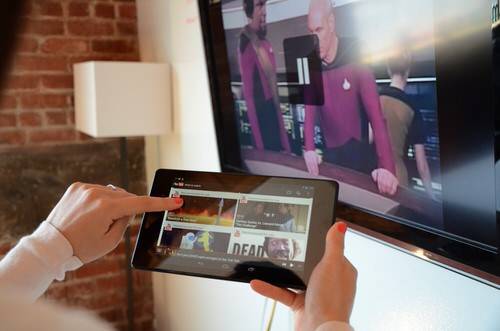
(7) If your media plays in a Chrome browser, it will play via Chromecast (for the most part): You don’t have to wait for specific apps to support it. The Chrome browser powers the device, and it’s capable of tossing practically anything from your laptop to Chromecast on your TV (though Silverlight and Quicktime videos need not apply, notes Wired). Hulu, Rdio, and HBO Go reportedly work this way; so do Flickr photos and browser-based online presentations.
(8) If you’re hoping Chromecast will play nice with DRM-protected iTunes files, well, stop: This is not likely. At all. iTunes DRM (digital rights management) is fierce, and it has foiled countless other developers who’d like nothing better than to let their users enjoy iTunes videos.
Things get even more complicated when you consider Chromecast’s cloud-only modus operandi, since shows you buy or rent from iTunes usually come via download. Although Apple does allow some streaming, it’s mostly aimed at other iOS or OS X devices. It’s not like you can stream all of your iTunes media to any device with a browser. These details are daunting enough, but with the bad blood between Google and Apple, Chromecast has next to no chance of overcoming any of these issues.
(9) Consumers are already swarming in: The Google Play store has sold out of Chromecasts, with the earliest ship date showing August 7 (as of this writing). Amazon briefly had it, but then also sold out. At this time, Best Buy online is the only Internet retailer I found that has inventory, and here too, it’s very likely to sell out quickly.
[UPDATE July 25, 2013: BestBuy.com has sold out. UPDATE 2: BestBuy.com showed more stock, but seems to be out again. Clearly inventory levels are fluctuating, so if you’re interested, you may want to check the page periodically.]
At $35, it’s likely that many customers aren’t just buying one—they’re probably picking up piles of them, as Google recommended, for use on every TV in their house. The takeaway: If you want Chromecast and you spot it online, grab it. Grab it now.

(10) The free Netflix promotion applies to everyone [see update below]: Every product purchase comes with three months of Netflix for free. This is not some restricted offer for new customers only, but a valid promotion for both new and existing subscribers. (I confirmed this directly with Netflix.) If you factor that in, the already meager price of the Chromecast drops even lower still—to the tune of $11.
[UPDATE: The Los Angeles Times reports that, due to overwhelming demand, the Netflix deal has been terminated. Presumably, orders that came in prior to the decision will still be eligible, but if we get confirmation to the contrary, we will update this post.]
The Bottom Line
Users looking for TV streaming devices don’t lack choices. But so far, no single company has been able to deliver quite this combination of promised ease-of-use and cross-platform compatibility at a rock-bottom price.
Roku comes close, but it doesn’t integrate with mobile platforms very well—apart from having a remote control app—and its least expensive unit, the Roku LT, is more expensive ($50) and can’t handle HD. The Roku 2 XD can, but it costs $80. Interestingly, the company launched its own streaming stick last year, which plays 1080p HD, but at a high cost of $100. And it’s not easy to view a simple YouTube video on a Roku.
That’s not to say that Chromecast can satisfy every one of your streaming needs. As mentioned, Chromecast can’t play locally stored media files (at least not out of the box, though there are workarounds), and it will likely never play iTunes movies. But at this price, it’s tough to criticize it.
This isn’t the first time Google has dabbled with connecting TVs. Remember Google TV and the Nexus Q? Maybe third time’s the charm, because by the looks of it, the Chromecast seems like the company’s best chance for a hit.
To see the device in action, check out Google’s promotional video below.
http://www.youtube.com/watch/cKG5HDyTW8o
Image by Madeleine Weiss for ReadWrite






